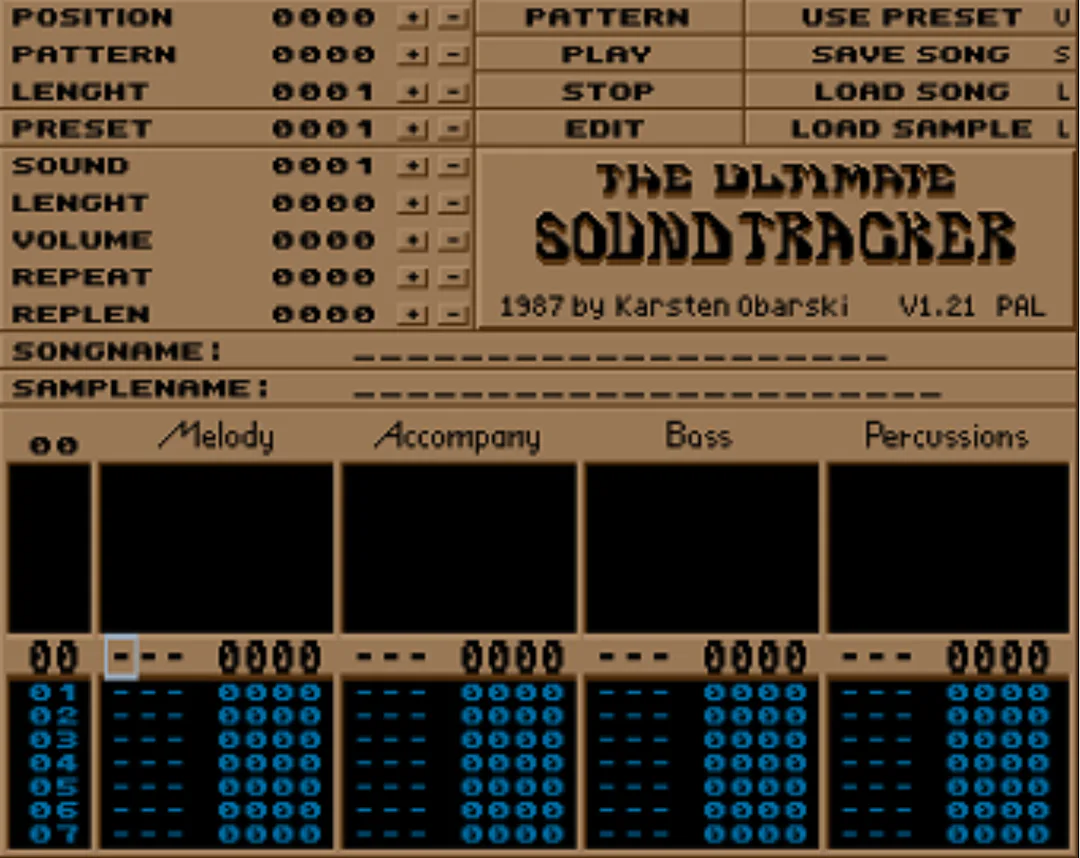This is an old revision of the document!
Tracker history
In the beginning
The Commodore Amiga was an amazing computer at its time. When the first Amiga was released in 1985, it was superior to anything on the market, both when it came to graphics and sound. It could display up to 4096 colours on the screen at the same time using its Hold-And-Modify (HAM) colour mode and it could play back 8-bit samples on four different channels using its amazing Paula chip. Two of the channels are sent to the left audio output and two are sent to the right audio output, thereby delivering stereo sound.
The first two commercial Amiga applications for music making appeared on the market in 1986; SONIX from Aegis and Deluxe Music from Electronic Arts. Both used a traditional note sheet, making them easy to understand but limited by the fact that the note sheet is not the ideal interface to create rapid sequences of different sampled wave forms.
In 1987, this changed by the release of The Ultimate Soundtracker, written by Karsten Obarski and distributed by the company AES. The arrangement was completely different from the traditional music applications by introducing the concept of patterns, where each pattern would hold 64 different steps and 4 different channels. Each step would store note, sample and command information such as quick arpeggio, portamento, and volume (this would later be called “effects”). Patterns could then be added together to form a song, which could be saved together with the samples as a “module” file (or mod-file for short).

